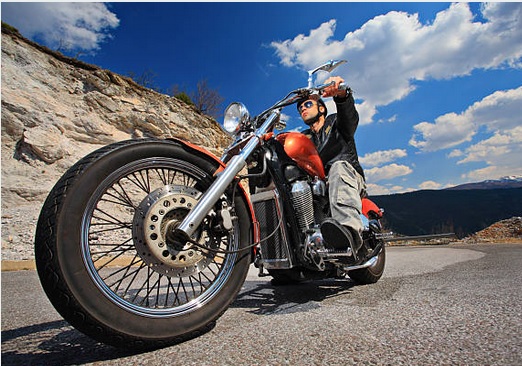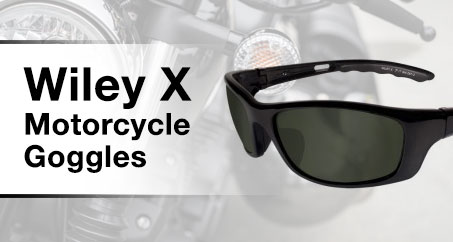How to Prevent Glasses from Fogging Inside a Motorcycle Helmet
For most people, riding a motorcycle is something they would do only very carefully and in broad daylight on dry streets.  However, for the pros, hobbyists, and brave individuals form whom a motorcycle is your primary form of transportation, a little night time or rain certainly isn’t going to stop you from going place to place. Sure, there are a few additional risks to watch out for but you understand exactly what your bike can handle and wear weather-resistant protective gear so everything is comfortable and fine.
However, for the pros, hobbyists, and brave individuals form whom a motorcycle is your primary form of transportation, a little night time or rain certainly isn’t going to stop you from going place to place. Sure, there are a few additional risks to watch out for but you understand exactly what your bike can handle and wear weather-resistant protective gear so everything is comfortable and fine.
The only problem occurs when you try to combine a cold night with wearing glasses inside your helmet. Whether you’ve got an open-faced helmet and motorcycle glasses or normal prescription glasses behind a full faceplate, any time your breath and cold air meet near your lenses without significant ventilation, fogging is going to happen. It can happen inside the cups of goggles and sometimes full faceplates fog up simply due to a combination of moist air and cold smooth plastic. The key is to know how to deal with it so that your vision returns as quickly as possible.
Glasses in a Helmet
The vast majority of people who wear prescription glasses and ride motorcycles try to do so simultaneously. This means carefully putting on the helmet, then slipping on your glasses, and finally closing the faceplate such that you’re actually looking through two layers of clear plastic, the glasses, and the plate. While this is very safe for your glasses giving them a decent chance of surviving minor accidents, it’s also one of the most scenarios to cause dangerous fogging. Because the full faceplate also covers your mouth, the helmet will catch your breach and channel the moist air up toward our glasses. If they are at all cooler than your breath (which is likely), then they will fog and your faceplate might as well.
Preventing Fogging on the Open Road
Fogging eyewear and faceplates are dangerous, everyone can understand that much. When a solid film of condensation blocks your view, you can’t respond to the drivers or the road around you with more than your memory of the situation and your feel for the bike until the fogging clears. The most dangerous time for fogging to occur is when you’re going fast on an open road near other drivers. However, if you’re driving above 50mph and experience fogging, simply open your front vent and the fast cool air should take care of the rest.
Preventing Fogging When You Slow Down
The real danger occurs because most helmet designs prevent fogging with ventilation at higher speeds such that riders forget that fogging is even an option. Then the danger occurs as you slow down, possibly take an exit or approach a rural highway stoplight. As the ventilation fades, your moist breath becomes the overpowering airflow. The warm droplets of water settle immediately on the cool plastic or glass of your lenses and suddenly you can’t see. The good news is that earlier glasses-wearing riders have already figured this one out. When you start to slow down, pop your faceplate to create more airflow and give your breath an alternate place to go. This should clear your glasses quickly and usually also works for a foggy faceplate as well.
Preventing Fogging at Stops
Finally, the last of your ventilation airflow will disappear when you pull to a stop. If you’ve ever wondered why some motorcyclists take off their helmets at lights they know will be red for a while, fogging is partly the answer. Of course, with your glasses lodged firmly into your helmet, this isn’t a good idea but you can fully open your faceplate and give your face (and glasses) some air for the duration of the stop. When the light changes or it’s your turn at the stop sign, you can simply flip it back down before you get going in a smooth one-hand motion.
Preventing Fogging Without the Faceplate Tricks
All that said, you don’t actually have to go through the whole opening and closing the helmet routine with one simple addition to your already respectable collection of motorcycle gear: anti-fog coating. This film simply blocks tiny droplets of water from settling on your lenses so that no fog can form and it can be added to any pair of everyday prescription or motorcycle glasses, and even helmet visors. If you switch to motorcycle glasses or goggles, you could wear an open or half-plate helmet instead or simply anti-fog your next pair of everyday prescription glasses so that they’re no longer a nuisance inside the helmet if you prefer your normal way of riding.
Tips for Anti-Fog Before Your New Glasses Come In
Prescription motorcycle glasses or goggles are one of the better ways to ensure your vision never fogs up on the road, but they also take a little time to order and prepare in the meantime, there are actually a few home remedies for lens fogging that will last at least one drive at a time. A little shaving cream, raw potato, or dish soap rubbed lightly against both sides of the lenses can have a similar effect though you might prefer the official solution with anti-fog wipes and sprays instead.
Whether you ride your motorcycle everywhere or simply enjoy a long weekend jaunt every now and again, it’s important to be safe on the road no matter what speed you’re going or what the weather is doing. Rainy and cold conditions only increase the chance of foggy glasses so do yourself and the other drivers a favor. Keep your glasses clear and consider a pair of anti-fog motorcycle glasses in the near future.




Leave a Reply